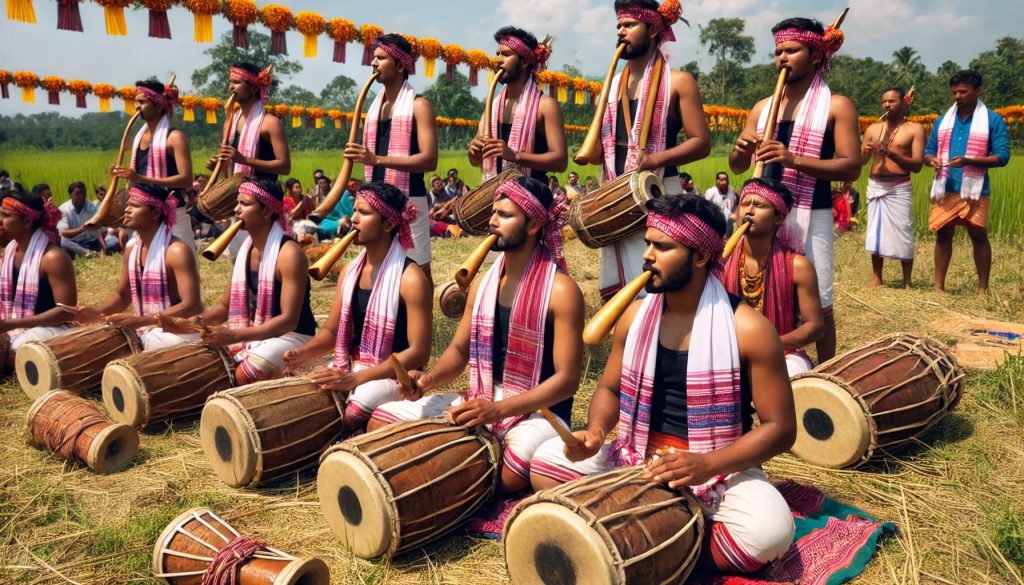Bihu Dance Costumes: A Celebration of Assam’s Cultural Heritage
Bihu dance is synonymous with the vibrant spirit of Assamese culture, and the traditional costumes worn during these performances are a vital part of this celebration. The intricate designs, bright colors, and handcrafted textiles of Bihu dance costumes reflect the region’s rich history, artistry, and cultural pride. Each element of the attire is carefully chosen, not just for its aesthetic appeal but also for its symbolic significance.
Bihu dance costumes are more than just clothing; they are a living testament to Assam’s textile traditions and the creativity of its artisans.
The Traditional Attire of Women

For women, the traditional Bihu dance costume is centered around the mekhela chador, a two-piece ensemble made of handwoven fabric. The mekhela (lower garment) and chador (upper garment) are often crafted from Assamese silk, such as muga, paat, or eri, prized for their natural sheen and durability.
- Colors and Patterns: Traditional costumes typically feature bright colors like red, white, and golden yellow, symbolizing prosperity and joy. Intricate patterns, inspired by Assamese motifs such as flowers, birds, and geometric shapes, are woven into the fabric.
- Jewelry: The costume is complemented with traditional Assamese jewelry, including necklaces like junbiri, dholbiri, and earrings like thuriya. These ornaments enhance the dancers’ elegance and add to the visual appeal of the performance.
The Traditional Attire of Men

For men, the traditional Bihu costume consists of a dhoti (a long piece of cloth wrapped around the waist) paired with a gamosa (a handwoven scarf or towel) draped around the neck or tied as a headgear. The gamosa is a symbol of Assamese culture and pride, often featuring red patterns on a white base.
Men also wear simple kurtas or shirts, allowing ease of movement during the energetic dance routines. The costume’s simplicity highlights the dynamism of the performance and complements the vibrant attire of the women.
Cultural and Artistic Significance
The Bihu dance costumes are not just visually stunning but also carry deep cultural significance:
- Symbol of Unity: The traditional costumes unite the community by representing a shared heritage.
- Celebration of Craftsmanship: Each piece is handcrafted by skilled weavers, showcasing Assam’s exceptional textile artistry.
- Connection to Nature: The motifs and colors often draw inspiration from the natural beauty of Assam, reflecting the people’s harmonious relationship with their environment.
Modern Interpretations and Global Recognition
While traditional designs remain popular, modern interpretations of Bihu dance costumes have emerged, blending age-old styles with contemporary aesthetics. These adaptations help introduce Assamese culture to global audiences, ensuring its relevance in the modern world.
At cultural events and festivals worldwide, performers proudly wear these costumes, allowing people from diverse backgrounds to experience the beauty of Assam’s traditions.
Experience the Elegance of Bihu Dance Costumes
The beauty of Bihu dance costumes lies in their ability to convey the joy and vibrancy of Assam’s culture. From the meticulous craftsmanship of the textiles to the radiant colors that reflect the festival’s spirit, these costumes are a feast for the eyes and a source of pride for the Assamese people.
At Brihottor London Bihu, we celebrate the artistry and tradition of Bihu dance costumes through performances and exhibits that highlight their timeless beauty. Join us in cherishing the elegance and cultural richness of these traditional ensembles.
Let’s unite to preserve the rich heritage of Assam for future generations.